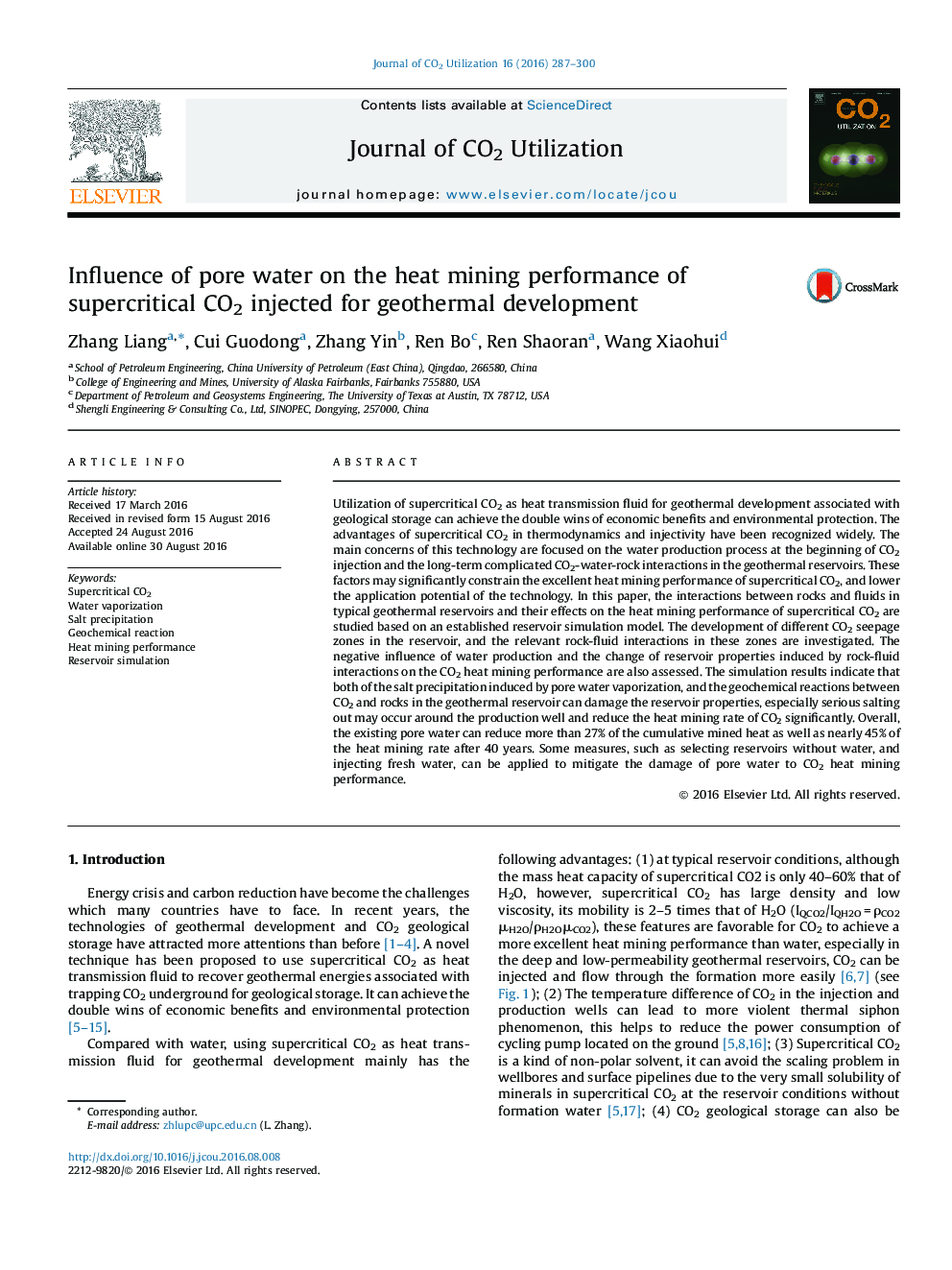| Article ID | Journal | Published Year | Pages | File Type |
|---|---|---|---|---|
| 6529165 | Journal of CO2 Utilization | 2016 | 14 Pages |
Abstract
Utilization of supercritical CO2 as heat transmission fluid for geothermal development associated with geological storage can achieve the double wins of economic benefits and environmental protection. The advantages of supercritical CO2 in thermodynamics and injectivity have been recognized widely. The main concerns of this technology are focused on the water production process at the beginning of CO2 injection and the long-term complicated CO2-water-rock interactions in the geothermal reservoirs. These factors may significantly constrain the excellent heat mining performance of supercritical CO2, and lower the application potential of the technology. In this paper, the interactions between rocks and fluids in typical geothermal reservoirs and their effects on the heat mining performance of supercritical CO2 are studied based on an established reservoir simulation model. The development of different CO2 seepage zones in the reservoir, and the relevant rock-fluid interactions in these zones are investigated. The negative influence of water production and the change of reservoir properties induced by rock-fluid interactions on the CO2 heat mining performance are also assessed. The simulation results indicate that both of the salt precipitation induced by pore water vaporization, and the geochemical reactions between CO2 and rocks in the geothermal reservoir can damage the reservoir properties, especially serious salting out may occur around the production well and reduce the heat mining rate of CO2 significantly. Overall, the existing pore water can reduce more than 27% of the cumulative mined heat as well as nearly 45% of the heat mining rate after 40 years. Some measures, such as selecting reservoirs without water, and injecting fresh water, can be applied to mitigate the damage of pore water to CO2 heat mining performance.
Related Topics
Physical Sciences and Engineering
Chemical Engineering
Catalysis
Authors
Zhang Liang, Cui Guodong, Zhang Yin, Ren Bo, Ren Shaoran, Wang Xiaohui,
